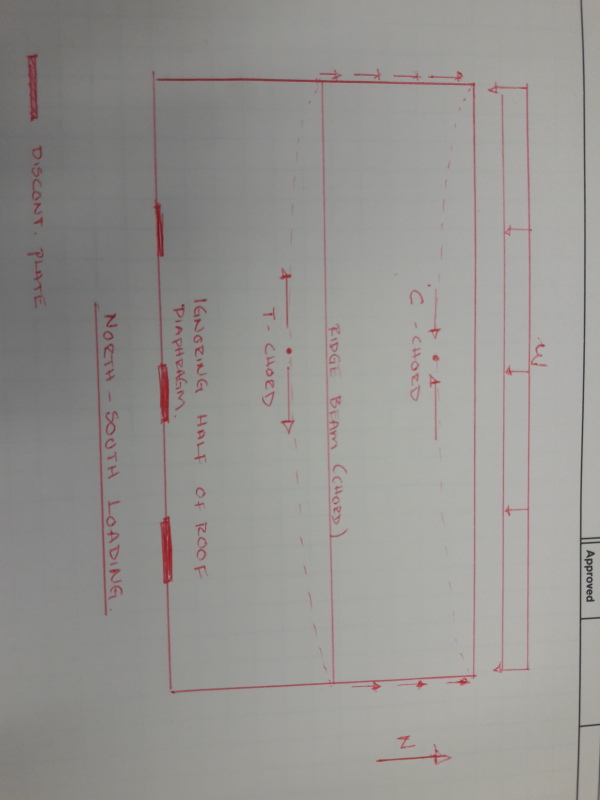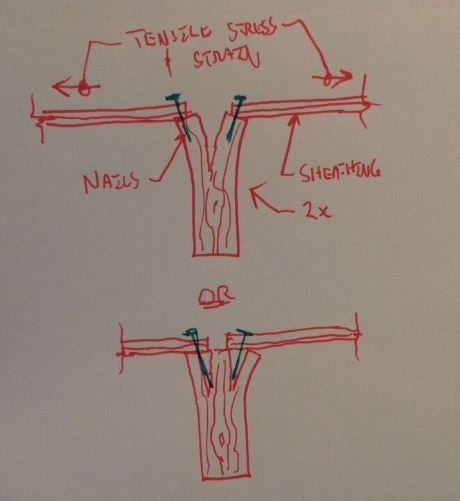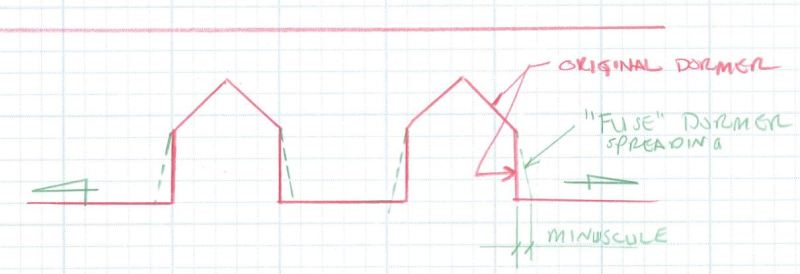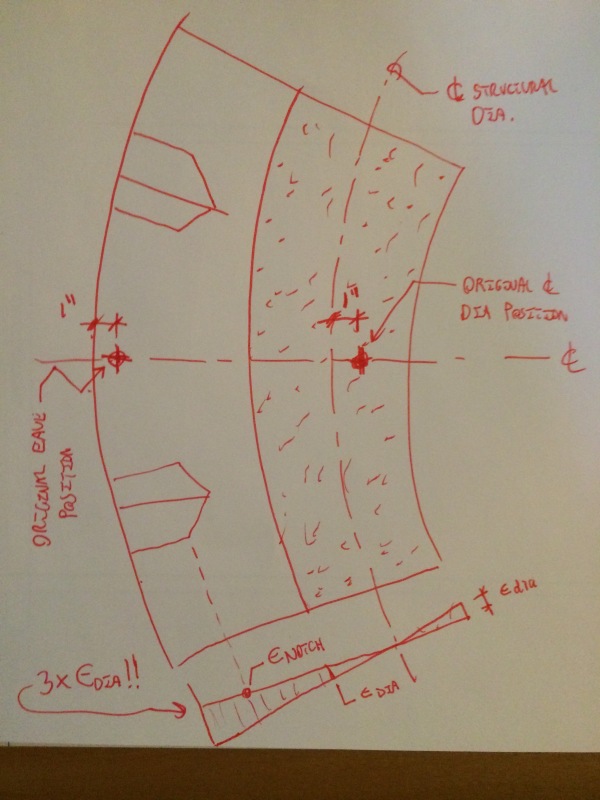redtiger
Structural
- Oct 10, 2007
- 8
Hello,
I am working on a new wood framed building. There are several dormers where the double top plate will have a discontinuity. Please see the attached sketch.

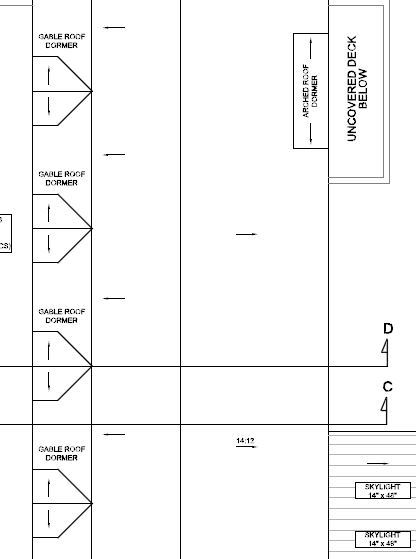
Based on diaphragm design, the chord force is around 2.5 kips. My question is the following, how do I connect the plates at these locations. My first idea was to install a steel frame at these openings, weld a strap to the end of each steel post and nail the other side of the strap to the next continous double plate.
Any other ideas would be greatly appreciate it.
Regards
I am working on a new wood framed building. There are several dormers where the double top plate will have a discontinuity. Please see the attached sketch.


Based on diaphragm design, the chord force is around 2.5 kips. My question is the following, how do I connect the plates at these locations. My first idea was to install a steel frame at these openings, weld a strap to the end of each steel post and nail the other side of the strap to the next continous double plate.
Any other ideas would be greatly appreciate it.
Regards

